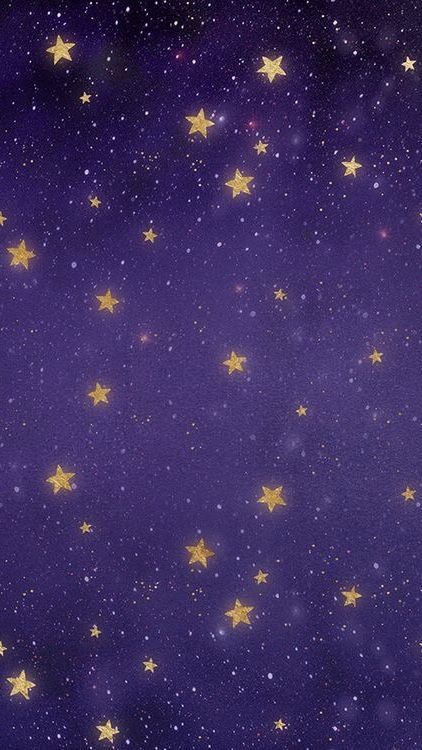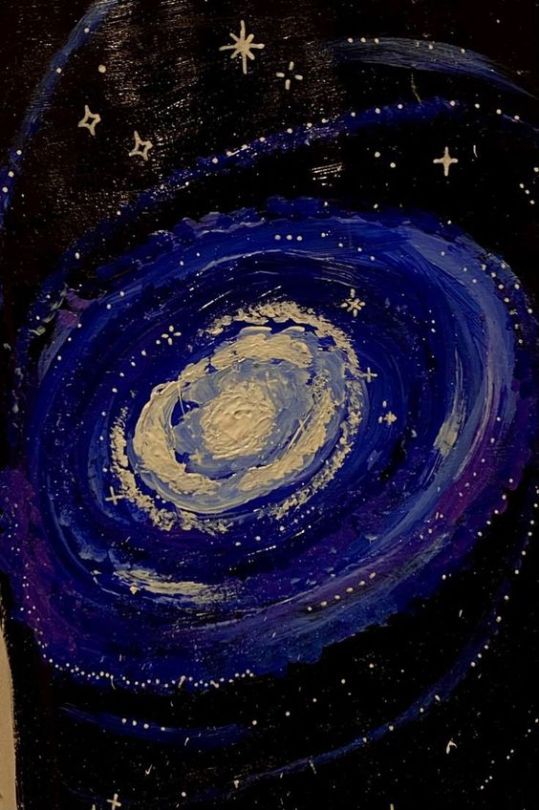Universe - Blog Posts


working in space (x)


Northern Lights over Stonehenge UK
Astronomy cake. 😍



What Is This ‘Cosmic Question Mark’ Captured by the James Webb Space Telescope?
The James Webb Space Telescope has captured a spectacular new image of a pair of actively forming stars about 1,470 light-years away. But beneath the breathtaking phenomenon, some viewers noticed a peculiar shape among the backdrop of celestial objects: a glowing question mark. The image quickly went viral on social media, with jokes about its origin ranging from aliens to a glitch in the Matrix.
The object’s color indicates it is either very distant—billions of light-years away—or much closer and obscured by dust.
The shining question mark represents two galaxies merging. The hooked portion of the shape may be what’s called a tidal tail—a thin, elongated stream of stars and gases that occurs as galaxies interact.
Credit: NASA








Webb meets Chandra X-ray

𝑪𝑶𝑺𝑴𝑶𝑺 𝑭𝑰𝑬𝑳𝑫
This image shows a smoothed reconstruction of the total (mostly dark) matter distribution in the COSMOS field, created from data taken by the NASA/ESA Hubble Space Telescope and ground-based telescopes. It was inferred from the weak gravitational lensing distortions that are imprinted onto the shapes of background galaxies. The colour coding indicates the distance of the foreground mass concentrations as gathered from the weak lensing effect. Structures shown in white, cyan, and green are typically closer to us than those indicated in orange and red. To improve the resolution of the map, data from galaxies both with and without redshift information were used.
The new study presents the most comprehensive analysis of data from the COSMOS survey. The researchers have, for the first time ever, used Hubble and the natural "weak lenses" in space to characterise the accelerated expansion of the Universe.
Black Holes: The Universe’s Most Mysterious Giants!

Check out this mind-blowing diagram that breaks down the anatomy of a black hole, one of the most enigmatic phenomena in the cosmos. From the event horizon to the singularity, black holes challenge everything we know about physics and space-time.
Swipe left to dive deep into the science behind these cosmic wonders! 🕳️Learn more --> https://www.jameswebbdiscovery.com/universe/100-fascinating-facts-about-black-holes
#BlackHole #SpaceExploration #CosmicMystery #NASA #Astrophysics #ScienceFacts #Universe
NASA's Webb Telescope just dropped this INSANE image of a star-forming region called NGC 604
March 9, 2024, NASA's Webb Telescope just dropped this INSANE image of a star-forming region called NGC 604, located a whopping 2.73 million light-years away in our neighboring Triangulum Galaxy (aka M33)!

Want to dive deeper? Check out the full article ➡️ https://www.jameswebbdiscovery.com/discoveries/james-webb-telescope-sheds-light-on-the-chaotic-cradle-of-stars-in-ngc-604
#JWST #NASA #Space #Stars #NGC604 #TriangulumGalaxy #StarFormation #Cosmology #Astrophysics #Science #Astronomy #Universe #Exploration #Learning #Knowledge
Top 10 Unanswered Questions about the Universe: Exploring the Mysteries Beyond

The vast expanse of the universe has captivated humankind for centuries, leaving us with numerous unanswered questions. From the nature of dark matter to the possibility of extraterrestrial life, the universe continues to intrigue and challenge our understanding. In this article, we will delve into the top 10 unanswered questions about the universe, shedding light on these enigmas and the ongoing scientific endeavors to unravel them. Read full article here.
What the James Webb Telescope May Uncover about EBLM J0555-57Ab, the Smallest Star

EBLM J0555–57Ab, a diminutive red dwarf nestled within a triple star system, approximately 640 light-years away from Earth, vies with its stellar counterpart, 2MASS J0523–1403, for the title of the smallest star in existence. Image credit: Sarah Collins, Cambridge University
EBLM J0555-57Ab presents a unique opportunity for astronomers to study the earliest stages of stellar formation. Due to its diminutive size, this star is likely to be at an early phase in its evolution, possibly still in the protostellar stage. The James Webb Telescope's exceptional sensitivity and infrared capabilities will enable astronomers to observe the star with unprecedented precision. By scrutinizing the gas and dust surrounding EBLM J0555-57Ab, scientists hope to unravel the mechanisms behind star birth and the intricate interplay between nascent stars and their surrounding environment. Read full article here
NASA Animation Sizes Up the Universe’s Biggest Black Holes
Credit: NASA's Goddard Space Flight Center Conceptual Image Lab
Music: "In the Stars" from Universal Production Music
So, how exactly will the JWST go about studying these mysterious, ultra-dense objects? Well, black holes are known for their intense gravitational pull, which can cause nearby matter to heat up and emit radiation. The JWST's infrared capabilities will allow it to detect and study this radiation in detail, providing new insights into the behavior of black holes.
One of the key goals of the JWST's black hole research is to better understand the process of accretion, in which matter falls into the black hole and releases energy in the form of radiation. By studying this process in different types of black holes, the JWST could help shed light on some of the most fundamental questions in astrophysics, such as how galaxies form and evolve over time.
But the JWST won't just be looking at black holes in isolation. It will also be studying the way that black holes interact with their surrounding environments, including the stars and gas clouds that surround them. This could help us understand how black holes shape the evolution of galaxies and the wider universe.
All in all, the JWST's black hole research is set to be a game-changer for our understanding of the cosmos.
Unveiling the Secrets of Quasars: A Look at Webb's Latest Observations

Quasars are among the most distant and powerful objects in the universe, emitting immense amounts of energy and light. This week, the James Webb Space Telescope (JWST) has been observing several quasars, including J1537-3010, PSJ1606-2333, RM275, RM312, P2021, RM332, RM387, RM401, RM470, RM549, RM734, RM052, and PDS456-NIRSPEC. Know more about these observations here - https://www.jameswebbdiscovery.com/news/unveiling-the-secrets-of-quasars-a-look-at-webbs-latest-observations

the universe has a plan for you, even if you can't see it yet.


SpaceX launched its Inspiration4 mission from NASA's facility in Florida, successfully bringing its all-civilian crew into orbit. The mission is the first private crew launched to orbit by Elon Musk's company and the first time a crew was made up entirely of nonprofessional astronauts. 💙Join our Space family💙 🔔And turn on post notification.🔔 - Kindly follow @_space___lover_ for more interesting posts in future. • Double TAP ❤️ for more.... Follow @_space___lover_ to Learn New Amazing Stuff Everyday - - Do you agree with this post? 💯 ❗️Follow us for more Space Science Facts❗️ @_space___lover_ @_space___lover_ @_space___lover_ @_space___lover_ @_space___lover_ ❤️ Like! 🍎 Follow @_space___lover_ 📜 Share with space lovers! 🔊 Turn on post notifications! . . . . . ---------------------------------------------------- . #spacex #physics#nasa#physicsonly#science#fact#philosophy#philosopher#scientist#astronomy#astrophysics#universe#hawking#particlephysics#physicist#space#stringtheory#blackholes#quantumphysics#spacex#madamcurie#maths#blackhole#fact#gravity#Cosmos #space #knowledge#education#spacex (at SpaceX) https://www.instagram.com/p/CT3nGMUqpVm/?utm_medium=tumblr

💙Join our Space family💙 🔔And turn on post notification.🔔 - Kindly follow @_space___lover_ for more interesting posts in future. • Double TAP ❤️ for more.... Follow @_space___lover_ to Learn New Amazing Stuff Everyday - - Do you agree with this post? 💯 ❗️Follow us for more Space Science Facts❗️ @_space___lover_ @_space___lover_ @_space___lover_ @_space___lover_ @_space___lover_ ❤️ Like! 🍎 Follow @_space___lover_ 📜 Share with space lovers! 🔊 Turn on post notifications! . . . . . ---------------------------------------------------- . #iss #NASA #jwst #nasawebb #cosmoknowledge #physics#nasa#physicsonly#science#fact#philosophy#philosopher#scientist#astronomy#astrophysics#universe#hawking#particlephysics#physicist#space#stringtheory#blackholes#spacelover #spacex#madamcurie#maths#blackhole#fact#gravity#Cosmos#alberteinstein (at Iss - International Space Station - Nasa) https://www.instagram.com/p/CTwBPhDsijM/?utm_medium=tumblr

NASA's $10 billion James Webb Space Telescope, the largest and most powerful ever built, will launch on December 18 on an Ariane 5 rocket. 😌😌 . ⏬Comment your thoughts ⏬ 💙Join our Space family💙 🔔And turn on post notification.🔔 - Kindly follow @_space___lover_ for more interesting posts in future. • Double TAP ❤️ for more.... Follow @_space___lover_ to Learn New Amazing Stuff Everyday - - Do you agree with this post? 💯 ❗️Follow us for more Space Science Facts❗️ @_space___lover_ @_space___lover_ @_space___lover_ @_space___lover_ @_space___lover_ Double tap ❤️ Share More👇 Follow us for more 🌍 . . . . . . ➖➖➖➖➖➖➖➖➖➖➖➖➖➖➖➖➖➖➖➖➖ ----------------------------------------------------------------------------. .. #jwst #NASA #jemeswebbetelescope #jemeswebb #astronomy #astronomylover #astronomyfacts #interstellar #naturebeauty #patternsinnature #mathematicians #natureisamazing #science #space #universe #cosmology #astronomy #physics #education. #physics #physicist #physicsfacts #sciencefacts #science #cosmos #cosmology #universe #astrophysics #astronomy #spacescience #spaceexploration #quantumphysics #einstein (at NASA) https://www.instagram.com/p/CTlZVgQKbxq/?utm_medium=tumblr

💙Join our Space family💙 🔔And turn on post notification.🔔 - Kindly follow @_space___lover_ for more interesting posts in future. • Double TAP ❤️ for more.... Follow @_space___lover_ to Learn New Amazing Stuff Everyday - - Do you agree with this post? 💯 ❗️Follow us for more Space Science Facts❗️ @_space___lover_ @_space___lover_ @_space___lover_ @_space___lover_ @_space___lover_ ❤️ Like! 🍎 Follow @_space___lover_ 📜 Share with space lovers! 🔊 Turn on post notifications! . . . . . ---------------------------------------------------- . #solarsystem #cosmoknowledge #physics#nasa#physicsonly#science#fact#philosophy#philosopher#scientist#astronomy#astrophysics#universe#hawking#particlephysics#physicist#space#stringtheory#blackholes#quantumphysics#spacex#madamcurie#maths#blackhole#fact#gravity#Cosmos#alberteinstein (at Solar System) https://www.instagram.com/p/CThgjp2M48m/?utm_medium=tumblr

💙Join our Space family💙 🔔And turn on post notification.🔔 - Kindly follow @_space___lover_ for more interesting posts in future. • Double TAP ❤️ for more.... Follow @g.k.__world to Learn New Amazing Stuff Everyday - - Do you agree with this post? 💯 ❗️Follow us for more Space Science Facts❗️ @_space___lover_ @_space___lover_ @_space___lover_ @_space___lover_ @_space___lover_ ❤️ Like! 🍎 Follow @_space___lover_ 📜 Share with space lovers! 🔊 Turn on post notifications! . . . . . ---------------------------------------------------- . #cosmos #cosmoknowledge #physics#nasa#physicsonly#science#fact#philosophy#philosopher#scientist#astronomy#astrophysics#universe#hawking#particlephysics#physicist#space#stringtheory#blackholes#quantumphysics#spacex#madamcurie#maths#blackhole#fact#gravity#Cosmos#alberteinstein https://www.instagram.com/p/CTeZ7_HMNDg/?utm_medium=tumblr

❤️Double tap 👍 💙Join our Space family💙 🔔And turn on post notification.🔔 - Kindly follow @_space___lover_ for more interesting posts in future. • Double TAP ❤️ for more.... Follow @g.k.__world to Learn New Amazing Stuff Everyday - - Do you agree with this post? 💯 ❗️Follow us for more Space Science Facts❗️ @_space___lover_ @_space___lover_ @_space___lover_ @_space___lover_ @_space___lover_ ❤️ Like! 🍎 Follow @_space___lover_ 📜 Share with space lovers! 🔊 Turn on post notifications! . . . . . ---------------------------------------------------- . #cosmos #cosmoknowledge #physics#nasa#physicsonly#science#fact#philosophy#philosopher#scientist#astronomy#astrophysics#universe#hawking#particlephysics#physicist#space#stringtheory#blackholes#quantumphysics#spacex#madamcurie#maths#blackhole#fact#gravity#Cosmos#alberteinstein https://www.instagram.com/p/CTbVCrRLLnW/?utm_medium=tumblr

































